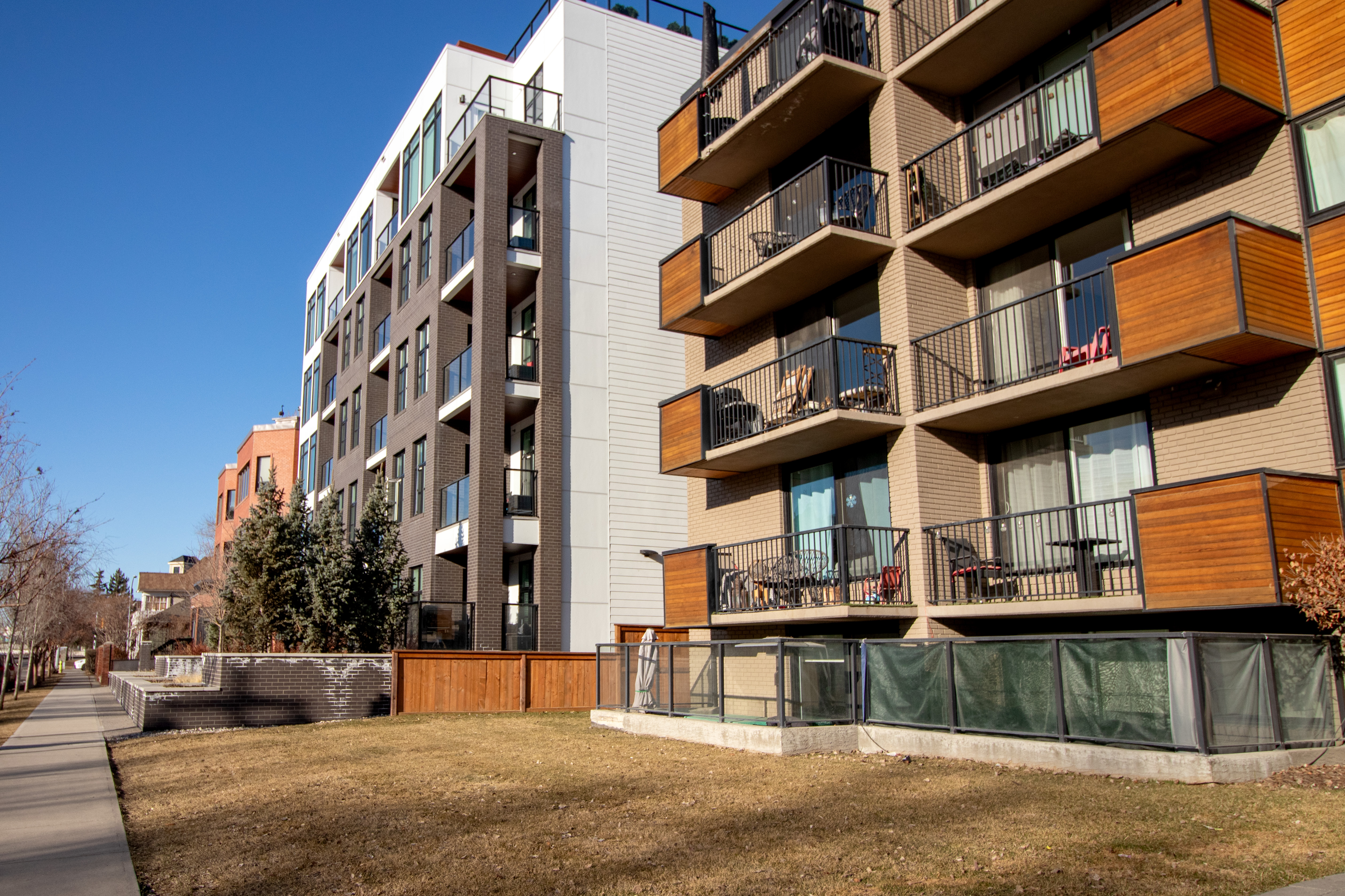Affordable housing in action
Connor Balsillie
“I was angry… really really mad,” Saleena, a Calgary mom of three begins to describe when she found out she had to move.
Selenna, a single mother of three, had been living in the upper level of a house for more than ten years when she got her eviction notice. She had just a month to move out of a “perfect” home that was close to her parents’ house.
“I was angry…. really, really mad,” she recalled. “The landlord gave me an eviction notice because they wanted to sell the house, he only gave me 30 days.”
Selenna, who we have given a pseudonym to protect her identity, still demonstrates feelings of helplessness. “I just feel like they should have given me more than 30 days notice, right? I had little to no options, I had a cat too,” she said. “As a single mom, I couldn’t find anywhere in my budget, especially with what’s going on right now.”
Emily Campbell, communications director at HomeSpace Society, an affordable housing non-profit organization, said that they are seeing an influx of families similar to Selenna’s requesting help.
“Our partners at family shelters, not only are they facing wild demand right now – like 200 per cent increases in emergency shelters – also when people get into a shelter, it is harder to move them out into market housing because there are very few large enough units to accommodate families, especially big families,” Campbell said.
Saleena said to find a new home quickly, she put ads on Kijiji, Facebook Marketplace, and RentFaster.
“There were comments saying to try Calgary Housing (Company),” she said, referring to the affordable housing organization.
Saleena visited one of their locations to explain her situation, bringing along her eviction notice. “They were really friendly, but they told us that it could take years because of waiting lists,” said Saleena.
“I told them I am really desperate, I didn’t know where else to go because I didn’t have family to move in with – my parents house already has enough people,” said Saleena. “They have a checklist for where you want to move into, I checkmarked everything because I was so desperate.”
Calgarians walking the Peace Bridge over the Bow River. // Photo: Julie Patton
Making Homes More Accessible
The Home is Here housing strategy, Outcome 1.C.1 recommends a policy that encourages municipal governments to encourage every community in Calgary to provide a minimum of 15 per cent housing units to be non-market.
“That’s toothless,” Campbell said, arguing that while it is a nice gesture to encourage affordable housing in all neighborhoods, nobody is actually holding the communities to it.
Campbell thinks people underestimate the capacity for their neighborhoods to offer affordable housing.
“Do I think certain communities should be excluded from, no. We should have affordable housing everywhere, low income people should have housing choices too,” she said.
Campbell remarks on the 45 family townhouses that were built in the suburban neighbourhood of Seton.
“Often it does make sense to build in more central areas, but in certain neighborhoods like Seton, there’s grocery stores, movie theaters, a YMCA, all these amenities within walking distance.”
Saleena agrees that affordable housing should be more accessible, “100 per cent, it should be more available, there are adults with disabilities, sometimes non-visible disabilities, I think everybody should keep open that affordable housing is a thing.”
Calgary Housing Company was able to put Saleena on an urgent list, “Within a week or two they had an open condo and asked if I wanted to see it,” she said.
Saleena moved into her current place on March 1 of 2023. She said she liked the new place, despite the older age of the building, and enjoyed the recent renovation.
“I was so relieved because the other options I was looking at, a basement alone was going for $2,000, and some people don’t even want kids in the house,” Saleena said.
Who lives in affordable housing?
Action 2.C.1. intends to advocate to the Alberta government to change how affordable housing is defined, specifically, in a way that allows affordable housing to not take up so much time at City Hall with public hearing requirements.
The City of Calgary’s definition states affordable housing tenants can include working professionals and families who earn less than $60,000 a year, as well as people who require subsidized housing for a variety of reasons, such as age and disability.
The Government of Alberta is more specific. To be eligible for affordable housing programs, applicants must have an income below local limits that are determined by the market for that community.
HomeSpace Society uses Canada Mortgage and Housing Corporation’s definition of affordable housing.
“Currently, HomeSpace’s average rent is about 40 per cent below market rate,” Campbell said.
But for a lot of HomeSpace residents, that rent may be further subsidized through programming by Calgary Homeless Foundation. There are a lot of features at play when it comes to defining affordable housing.
“We’re trying to ensure people aren’t paying more than 30 per cent of their income, that includes if they’re on AISH or EI or another government program and that’s they’re only income,” Campbell said.
There are 56 actions on the Home is Here plan. Sixteen actions out of those 56 involve affordable housing.
For Saleena, her rent is 40 per cent of her income, but she feels 100 per cent more stable now. “They check your income and bank statements every three months,” she said to determine if her finances are still applicable for subsidized housing.
Saleena describes a sense of reassurance at her new place. “If you need any maintenance, their response is so quick, another good thing is they make you get tenant insurance, I find it very beneficial for the tenants because what if a pipe bursts or there is a fire? Both neighbors are going to be affected, so we’re all covered.”
Apartments located in Sunnyside. // Photo: Julie Patton
What you should know about affordable housing
Campbell wants to challenge the stigma that affordable housing is some sort of handout.
“In fact, providing housing to people experiencing homelessness is actually a cost saving measure. It is less expensive,” said Campbell.
“It’s really expensive for society, for people to be homeless, because when people experience homelessness, they have higher rates of hospitalization, forced to take advantage of social programming, more run-ins with law enforcement,” Campbell said.
Campbell states that it makes more sense to run on a housing-first model. “We lower the barriers to housing, get people safely housed, then we can address other issues that may have gotten them to that point, like healthcare, or employment training,” she said.
Saleena shares a similar sentiment. “Don’t be ashamed of what people have to say, I was scared too. If I go into subsidized housing, what are people going to say about me? I don’t have a steady income and I have three kids,” said Saleena.
But she wishes she had utilized subsidized housing earlier. Her neighbors who have been living there for five years are an inspiration.

